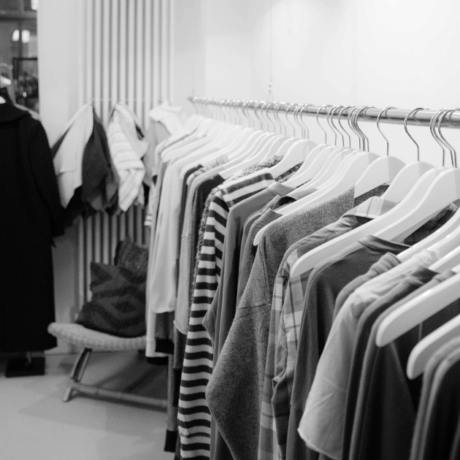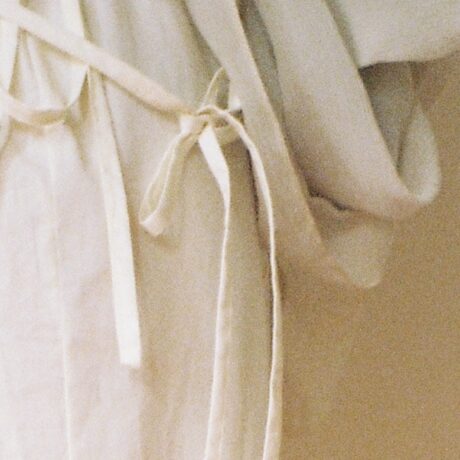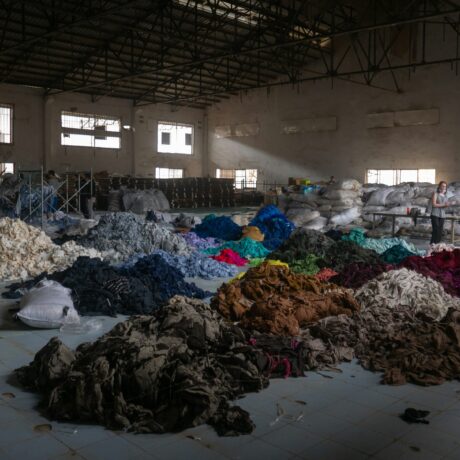Fashion’s opportunity to be a force for good, and show other industries how it’s done
This is a guest post from Outland Denim, a business founded to offer opportunity, financial freedom, education, and support to women who have come from backgrounds of exploitation or vulnerability.
Header image: Amy Higg Photography
Fashion’s opportunity to be a force for good
Here is something to think about: If we were to abolish modern slavery, we could put a serious dent in climate change at the same time.
Modern slavery is defined as situations where offenders use coercion, threats or deception to exploit victims and undermine their freedom. It is estimated to affect 40.3 million people globally, including 1 in every 130 women and girls.
Not only is modern slavery a gross neglect of human rights, it is also one of the world’s largest greenhouse gas producers, according to Kevin Bales and Benjamin K. Sovacool of The Rights Lab, Nottingham University. In fact, if modern slavery were a country it would be the 3rd largest emitter of carbon dioxide in the world after China and the US.
Bales and Sovacool state, “Abolishing slavery is shown to be one of the most effective instruments for climate change mitigation, especially given that the costs of ending slavery seem on par to about $20 billion, or the expense of a single large nuclear power plant.”
The effects of climate change are also felt heaviest in communities that are already vulnerable, causing a cycle of social and environmental harm.
So, what does any of this have to do with fashion? Sadly, a lot.
According to the Global Slavery Index, $127.7 billion garments at-risk of containing modern slavery in their supply chains are imported by G20 countries each year. Fashion is ranked second in terms of the industries that pose the highest risk.
One thing we want to make clear is that modern slavery does not always equal worker exploitation or underpayment, they are nuanced issues and each situation is as individual as the human it impacts. But, both are exploitation and occur in the same supply chain ecosystem, and so when organisations are forced to look into modern slavery in their supply chain, it’s the first step to identifying any kind of worker exploitation no matter the category it falls under.
Brands, in particular, are understandably nervous to invest in looking for these instances of exploitation in their supply chains. It’s expensive in terms of both financial and human resource investment, there are cultural and language barriers to navigate, strong relationships to establish, and of course to actually publicly uncover instances of exploitation would traditionally be a PR disaster.
However, we believe the next step in brand accountability and transparency is to shift toward a culture that is not afraid to uncover these instances of exploitation. Because without identifying them, we cannot fix them.
Collaboration is critical to making this investment accessible. With this in mind, we recently partnered with Precision Solutions Group, Bossa Denim, and our direct competitor Nudie jeans to establish a program to offer support to one of the fashion industry’s most vulnerable segments being cotton farming communities. Through this program, we get to build stronger brand-maker connections, identify possible issues, and share costs with partners. Plus, we can confirm that in no way has this program pitted us or Nudie against each other!
This brings us to the question of once exploitation, modern slavery, or vulnerability to either has been identified, what can be done to combat this?
Combatting Modern Slavery
Opportunity for safe and stable employment is key, and this is the foundation upon which Outland Denim was created. The idea being to support women who have come from backgrounds of modern slavery, exploitation, or vulnerability, not with charity, but safe employment, a living wage, education, and healthcare, that in turn allows them to support their family and contribute to the prosperity of their wider community. It’s nothing above-and-beyond. Incredible things will happen when we simply do the bare minimum in providing people the human rights and support they deserve.
In talking to one of our first staff members about three years into her working with us we asked, ‘How is this helping you; this kind of employment and opportunity?’ She went on to say that because of this opportunity she’d been able to build a home for her family who previously lived under a plastic sheet. She went on to say that she was also able to buy her sister back off a man who owned her.
This model has proven to be transformational in the lives of our team members, and they are proof that fashion has the ability to uplift individuals, families, and whole communities.
View this post on Instagram
Here are just a few of the lives that have been touched by Outland Denim wearers.
“When I think about my work with Outland, I have so much pride. Before, I did not think I had the option to work, but now I am able to not only work, but excel! I have learnt how to sew shirts and jackets, and teach others who are new. These jeans are my love. Every day I put my love into them.” – Reasmey
Before I worked at Outland my family and I had a lot of debt. It was difficult to plan for our future. Now, I am debt free! And am able to sponsor my nephew to go to school. My strength comes from my children; I want them to have the opportunity to study and have a better life. – Rom Chang
My life has changed since working with Outland. Here everybody shows respect for each other. I have learnt how to make many new styles, I have been able to save more money and, with the education programs, my Khmer and English has improved. I would like to share my story with people in bad situations – maybe one day my story and experiences could help others. Thank you. – Achariya
We are just one brand, but reimagining the way we as a society do ‘fashion’ we can uplift whole communities, mitigate climate change, and at the same time influence other industries with large social injustice issues like electronics, fish, cacao, and sugarcane to follow suit.
In practice, this means an industry that:
- Partners with researchers and lawmakers fighting for human rights regulation and legislation in supply chains;
- Offers opportunities to people who are considered vulnerable who may find difficulty in securing employment;
- Invests in mapping whole supply chains and builds long-term relationships with their suppliers;
- Has robust living wage requirements;
- Collaborates (even with direct competitors) to find solutions, shares costs, and shows that it’s not a competitive disadvantage to do so;
- Does not put the onus on consumers to do the research, or disrespect them through greenwashing;
- Demonstrates that all of the above can be done while still being economically successful and meeting shareholder’s expectations.
It may sound like a utopian goal, one far out of reach. But the fact is the fashion industry is worth $3 trillion – and with that kind of economic power we as an industry can either do a lot of harm, or a lot of good.
References:
- Global estimates of modern slavery: forced labour and forced marriage — Executive summary
- Stacked Odds Report, Walk Free Foundation 2020
- From forests to factories: How modern slavery deepens the crisis of climate change by Kevin Bales and Benjamin K. Sovacool. Energy Research & Social Science, 77, available online 20 May 2021, 2214-6296/© 2021 The Author(s). Published by Elsevier Ltd. This is an open access article under the CC BY license
- Global Slavery Index ,Walk Free Foundation
Further Reading
Garment workers and climate change: The socioeconomic link
Human rights, transparency and accountability in fashion: A conversation on Uyghur forced labour
Marking Human Rights Day: How legislation can help protect the people who makes our clothes








